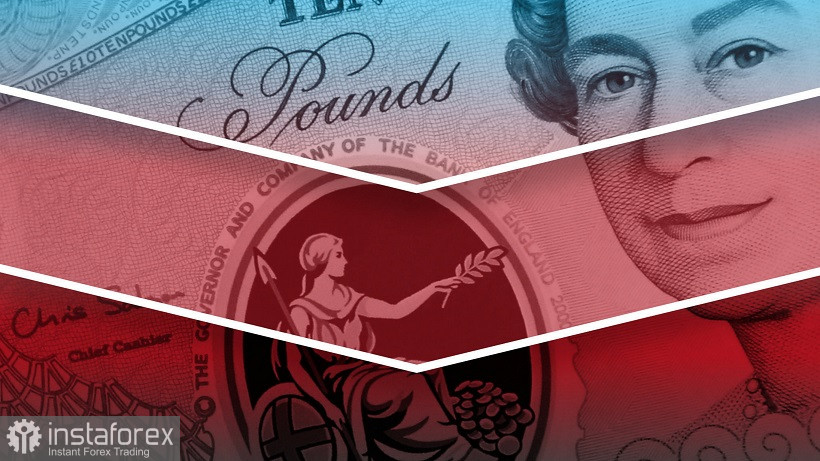The Bank of England will hold a meeting on September 22. The next meeting of the members of the English central bank was supposed to take place last week, but the meeting was postponed due to the death of Queen Elizabeth II. The pound is in agonizing expectation of a verdict: given the contradictory signals of a fundamental nature, the English central bank may provoke increased volatility in all pairs with the participation of the British currency. And if the GBP/USD pair will focus primarily on the results of the Federal Reserve meeting, then in the case of the GBP/JPY cross, the situation is different. Here, traders froze in anticipation of the decision of the British central bank.
It is noteworthy that last week the pound, paired with the yen, steadily strengthened its positions on September 13, the GBP/JPY cross-pair even updated the three-month price high, reaching 167.63. However, on the same day the price turned 180 degrees and began to confidently plunge, losing more than 400 points over the week. To date, the downward momentum has faded: the cross has drifted at the base of the 163rd figure in anticipation of Thursday's events.

First of all, it is necessary to understand – for what reason did the pound begin to lose its positions sharply and consistently? And is the BoE able to revive the upward trend of GBP/JPY?
So, last week, the most important macroeconomic indicators were published in the UK: in the labor market, inflation and the economy as a whole. Frankly speaking, the overall picture turned out to be very heterogeneous. For example, the data on the growth of the British economy disappointed: the volume of GDP in the country grew by only 0.2% on a monthly basis, with a growth forecast of 0.5%. In annual terms, the indicator came out at zero. The volume of industrial production decreased by 0.1% (m/m), and the volume of production of the processing industry grew minimally (by 0.1% m/m).
The growth of overall inflation in Britain formally showed the first signs of slowing down – instead of the expected increase of 10%, the indicator came out at around 9.9%. And yet, this is too aggressive inflation growth rates, especially since the basic consumer price index came out in the green zone, having been designated at 6.3%. It is obvious that such high inflation reduces the purchasing power of the British, exacerbating the economic downturn.
A vivid illustration of this is the latest report on retail sales in the UK, which was published last Friday. All components of the release came out in the red zone, collapsing into the negative area. Core sales decreased by 1.6% month-on-month, and fell by 5.4% year-on-year. Excluding fuel costs, the indicators also turned out to be below zero (-1.6% m/m, -5.0% y/y). The absolutely disastrous sales report was another sign that the country's economy is slipping into recession.
The released figures suggest that the BoE will face a dilemma tomorrow – whether to raise the interest rate by 75 or 50 basis points? The basic scenario, which is most widely discussed in the market, speaks in favor of increasing the rate by 75 points. However, it should be emphasized here that the market sentiment regarding the possible outcome of the September meeting has been changing over the past three weeks.
For example, following the parliamentary hearings that took place at the beginning of this month, the hawkish expectations of traders noticeably weakened, as some officials of the BoE voiced a rather restrained position on the pace of rate hikes. In particular, a member of the central bank committee, Silvana Tenreyro, said that the English central bank "should act slowly and prudently" in conditions of great uncertainty. According to her, the country "has yet to see most of the consequences of a significant tightening of monetary policy."
It is not surprising that after such rhetoric, the probability of a 75-point rate hike decreased from 72% to 50%.
However, recent macroeconomic reports have tipped the scales in favor of a hawkish scenario. First of all, due to the labor market, the indicators of which surprised their "green color": the unemployment rate decreased to 3.6%, and salary indicators increased by 5.5% excluding bonuses, by 5.2% taking into account bonuses.
To date, interest rate futures in the UK indicate an 80 percent probability of a 75-point scenario. Economists polled by Reuters say there is a 75 percent probability of an increase in the BoE rate by this amount.
On the one hand, the chances are really great. On the other hand, it cannot be said that the rate increase by 75 points has already been won back, including in the context of the GBP/JPY cross. Moreover, if not all members of the central bank vote for this decision, the pound may also be under pressure, reacting to signs of a split in the Committee's camp. This scenario is quite likely, given the position of Tenreyro and some of her centrist colleagues.
Thus, the fate of the GBP/JPY cross-pair will be determined by the BoE. The results of the September meeting will either allow bulls to return the pair to a three-month high, around the mark of 167.50, or strengthen the downward dynamics. In this case, the pair may collapse to the level of 162.00 (the lower limit of the Kumo cloud on the daily chart). At the moment, the tone of trading is set by the yen, which is enjoying an increase in anti-risk sentiment in the market. However, the focus of attention will shift on Thursday: the price movement vector will be determined by the English central bank.
 English
English 
 Русский
Русский Bahasa Indonesia
Bahasa Indonesia Bahasa Malay
Bahasa Malay ไทย
ไทย Español
Español Deutsch
Deutsch Български
Български Français
Français Tiếng Việt
Tiếng Việt 中文
中文 বাংলা
বাংলা हिन्दी
हिन्दी Čeština
Čeština Українська
Українська Română
Română

